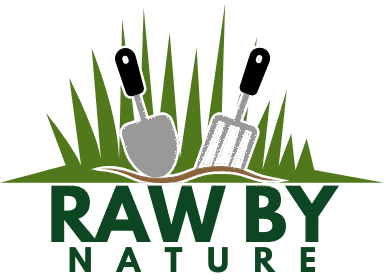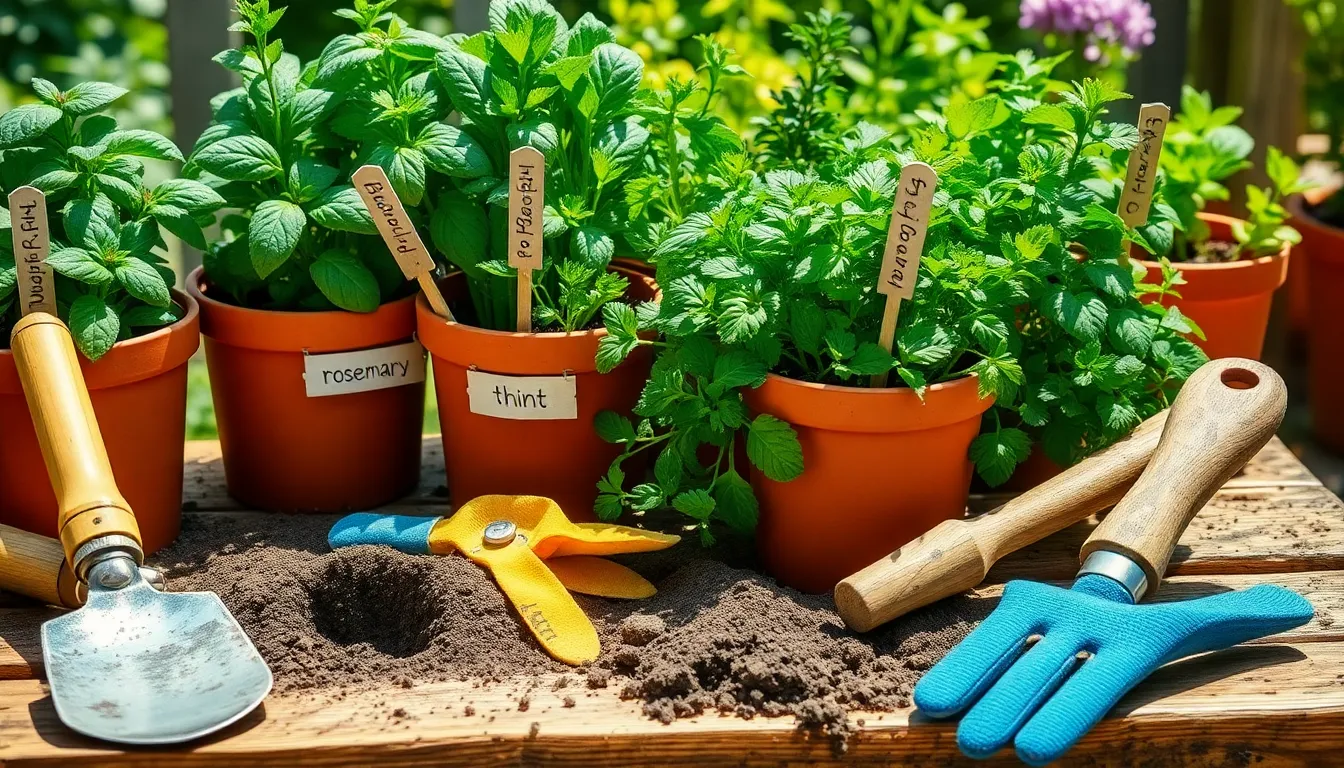Herb gardening is a delightful journey that blends the joy of nurturing life with the reward of fresh flavors at your fingertips. Whether you’re just beginning to explore the world of basil and mint or you’ve been cultivating a thriving herb haven for years, the right tools can make your gardening experience both more efficient and enjoyable.
For those new to the garden, the prospect of selecting tools might feel a bit daunting, but fear not—our guide is here to demystify the essentials. Even seasoned gardeners will find value in revisiting their toolkit to ensure every item is up to the task of fostering a bountiful herb garden.
In this article, we’ll delve into the fifteen must-have tools that will elevate your herb gardening game, from planting to pruning. By the end, you’ll be equipped with both the knowledge and the confidence to cultivate a lush, aromatic paradise right in your backyard or on your windowsill.
Choosing Quality Herb Snips
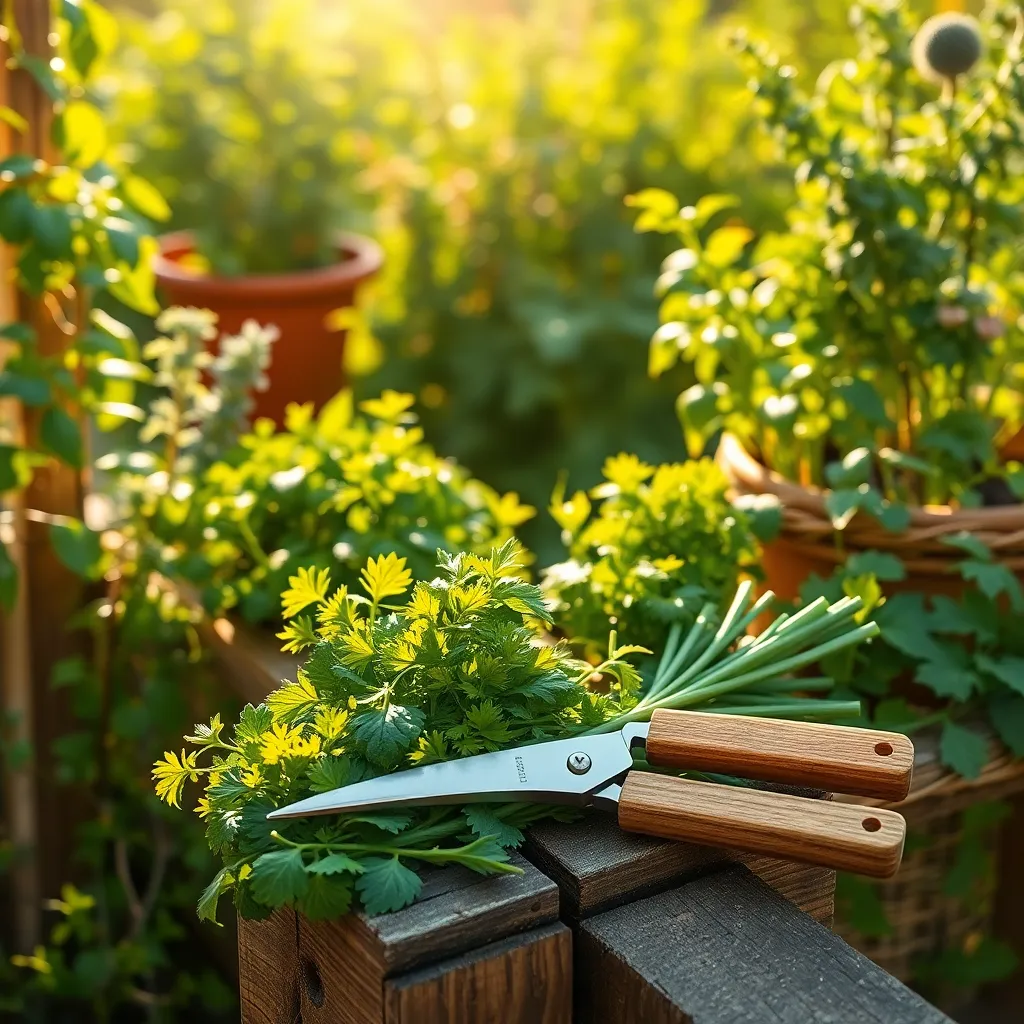
Choosing the right herb snips can significantly enhance your gardening experience. For precise cuts and healthy herb growth, opt for snips with sharp, stainless steel blades that resist rust and maintain their edge over time.
Look for snips that offer comfortable, ergonomic handles to reduce hand fatigue during extended trimming sessions. This is especially important if you have a larger herb garden or plan to spend long periods maintaining it.
Consider snips with a spring mechanism for ease of use, which helps in reducing the effort needed to open and close the blades. This feature is particularly beneficial for those with arthritis or limited hand strength.
Advanced gardeners might benefit from snips with non-stick coated blades, which prevent sap buildup and ensure smooth cutting. This is ideal for herbs like basil or mint, which can be quite sappy.
The Versatility of Garden Trowels
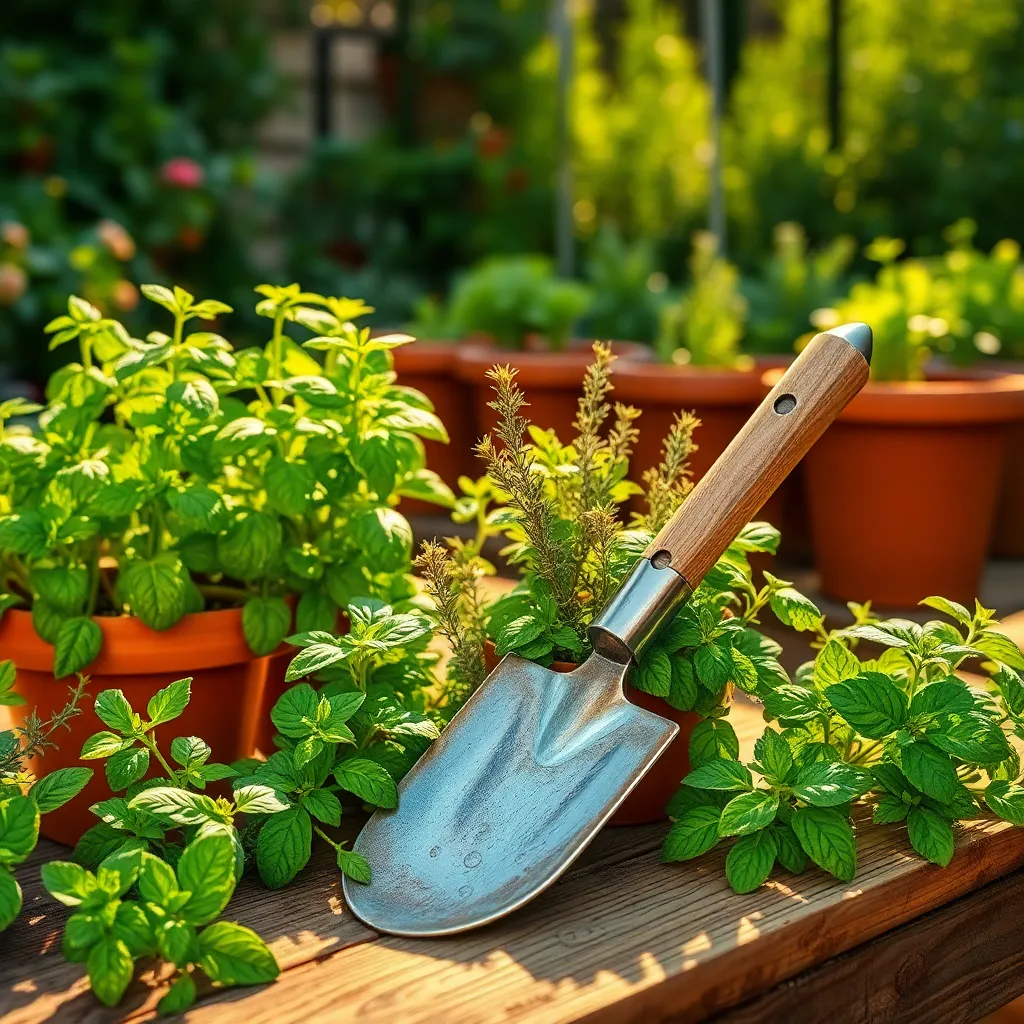
Garden trowels are essential tools that offer incredible versatility in herb gardening. Whether you’re planting seeds or transplanting seedlings, a trowel allows you to dig precise holes and manage soil with ease.
For beginners, a basic trowel with a comfortable handle and a sturdy blade is sufficient for most tasks. Look for one with a rust-resistant blade and an ergonomic grip to reduce hand fatigue during extended use.
Experienced gardeners may appreciate the benefits of specialized trowels, such as those with depth markings for planting at precise depths. These can be particularly helpful when planting herbs like basil, which need to be sown at a shallow depth of about 1/4 inch.
A trowel’s versatility extends beyond planting; it is also invaluable for weeding and mixing soil amendments. When working with potted herbs, use the trowel to gently loosen soil around roots during repotting, ensuring the plant transitions smoothly to its new container.
Precision with Pruning Shears
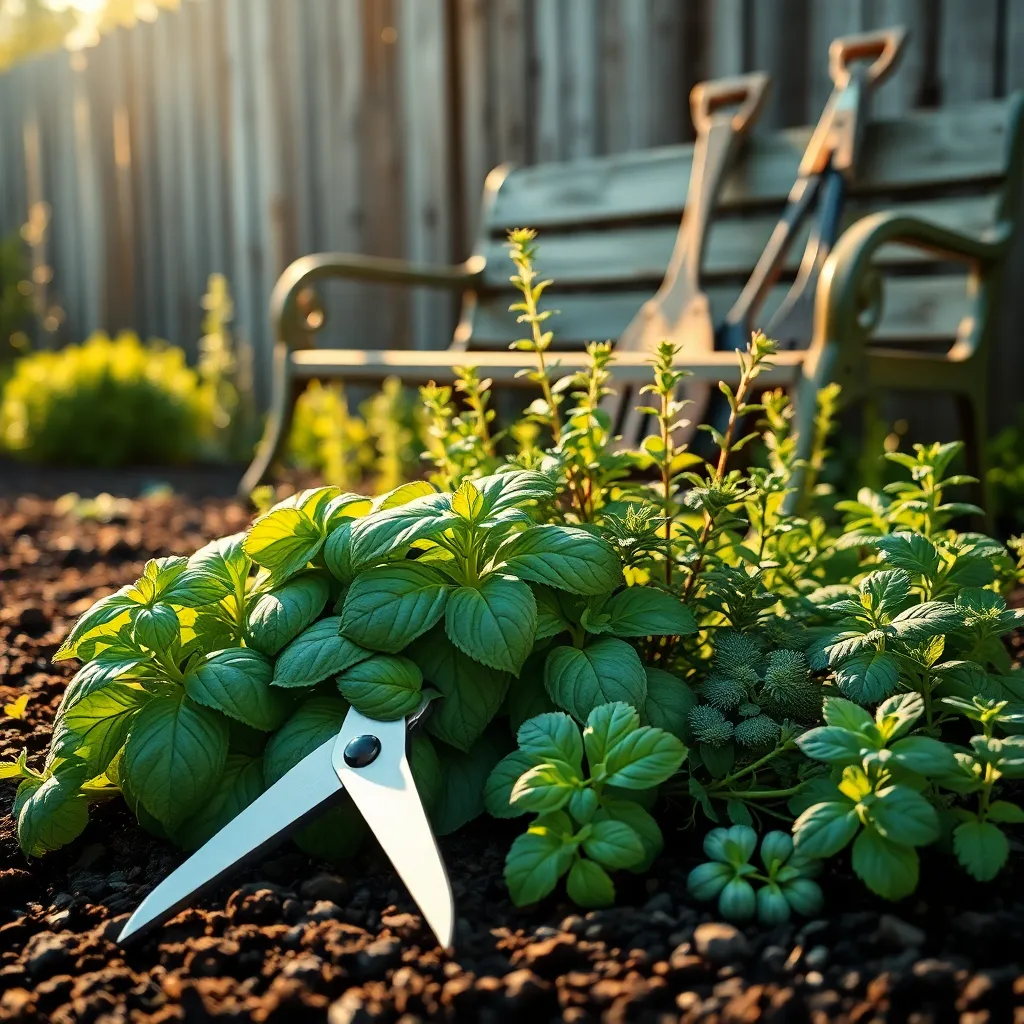
Pruning shears are an essential tool for herb gardeners, providing the precision needed to maintain healthy and productive plants. Whether you’re trimming back overgrown basil or snipping a few sprigs of thyme, using the right technique can make a significant difference in plant vitality.
Start by ensuring your pruning shears are sharp and clean, as dull blades can crush stems and spread disease. Sanitizing your shears between different plants is crucial to prevent the transfer of pathogens that can harm your garden.
When pruning herbs, always make cuts at a 45-degree angle above a node to encourage new growth and maintain airflow. This technique not only helps in shaping the plant but also promotes a more robust and bushy growth, which is ideal for herbs like mint and oregano.
For more mature herb plants, such as rosemary or sage, consider more substantial pruning once or twice a year to rejuvenate the plant. Advanced gardeners may also practice succession pruning, which involves trimming sections of the plant in intervals to ensure continuous harvest and plant health.
Benefits of a Sturdy Spade
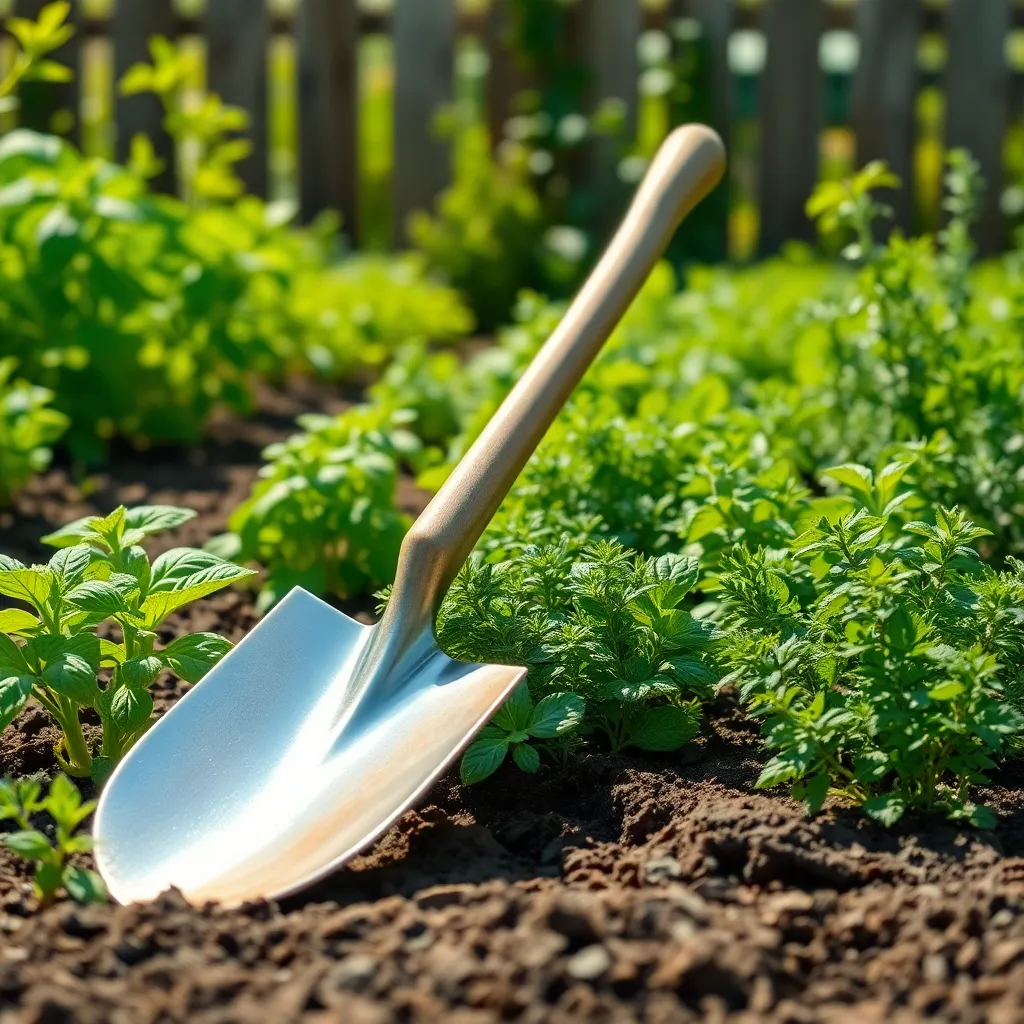
A sturdy spade is an indispensable tool for any herb gardener, offering both durability and versatility. It allows you to efficiently dig, turn, and lift soil, ensuring your garden beds are well-prepared for planting herbs.
When selecting a spade, opt for one with a solid steel blade and a comfortable, non-slip handle for better control. A sharp blade will help you make clean cuts through roots and compact soil, making your gardening tasks easier and more efficient.
For beginners, a square-edged spade is perfect for creating clean borders and edges around your herb garden. Experienced gardeners might appreciate a pointed spade, which is ideal for digging into harder or rocky soil without much hassle.
Maintaining your spade is essential to prolong its life and performance. Regularly clean it after use to prevent rust and keep the blade sharp by honing it with a file or sharpening stone periodically.
Using Hand Forks for Aeration
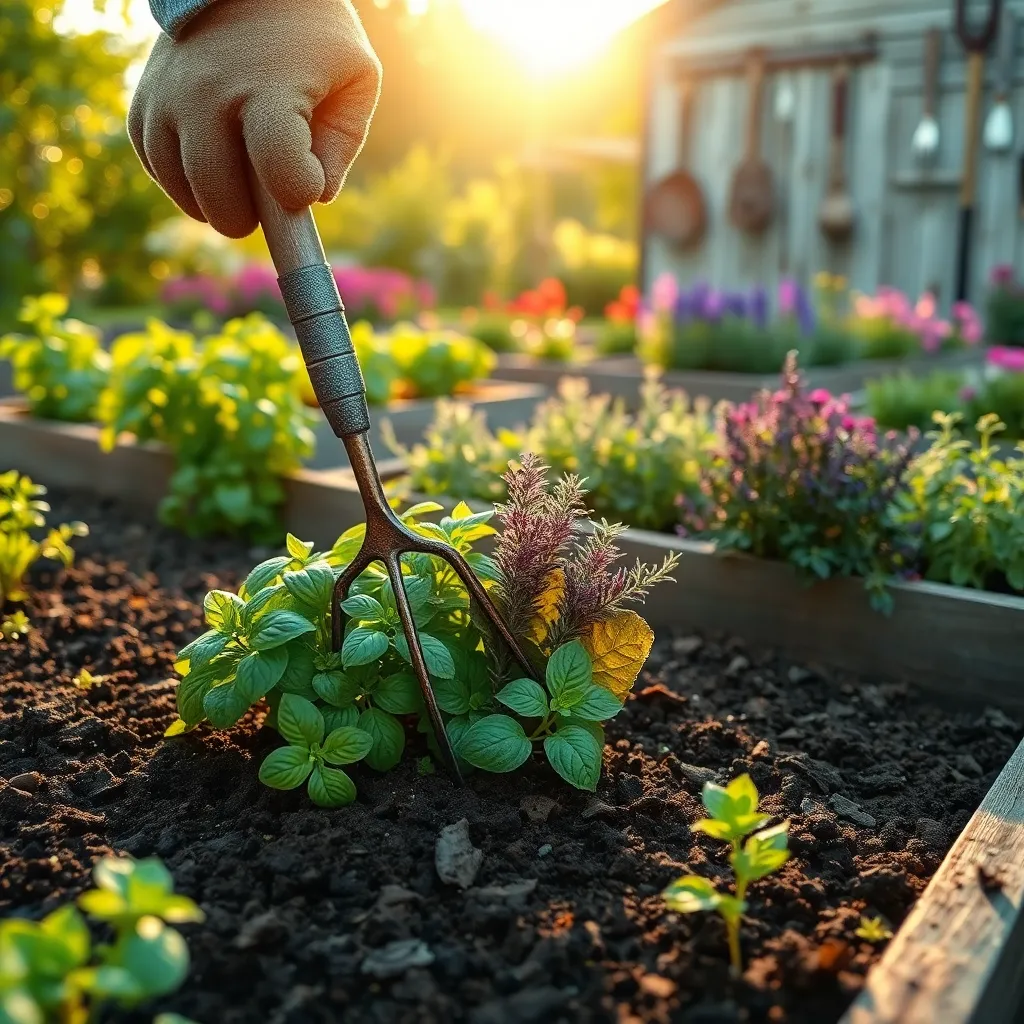
Hand forks are an essential tool for herb gardeners looking to improve soil aeration. By gently loosening the soil around your herbs with a hand fork, you allow air, water, and nutrients to penetrate more deeply, promoting healthier root systems.
Regular aeration can prevent soil compaction, which is common in container gardening or heavily trafficked garden areas. For beginners, it’s best to aerate the soil every few weeks, especially if you’re noticing water pooling on the surface.
When using a hand fork, insert it into the soil to a depth of about 4 to 6 inches and gently lift to break up compacted areas. This technique is particularly beneficial for perennial herbs like rosemary and thyme, which thrive in well-aerated soil.
For more advanced gardeners, consider using the hand fork to incorporate organic matter such as compost or aged manure as you aerate. This not only improves soil structure but also enhances nutrient availability, leading to robust herb growth.
Efficient Watering with a Hose
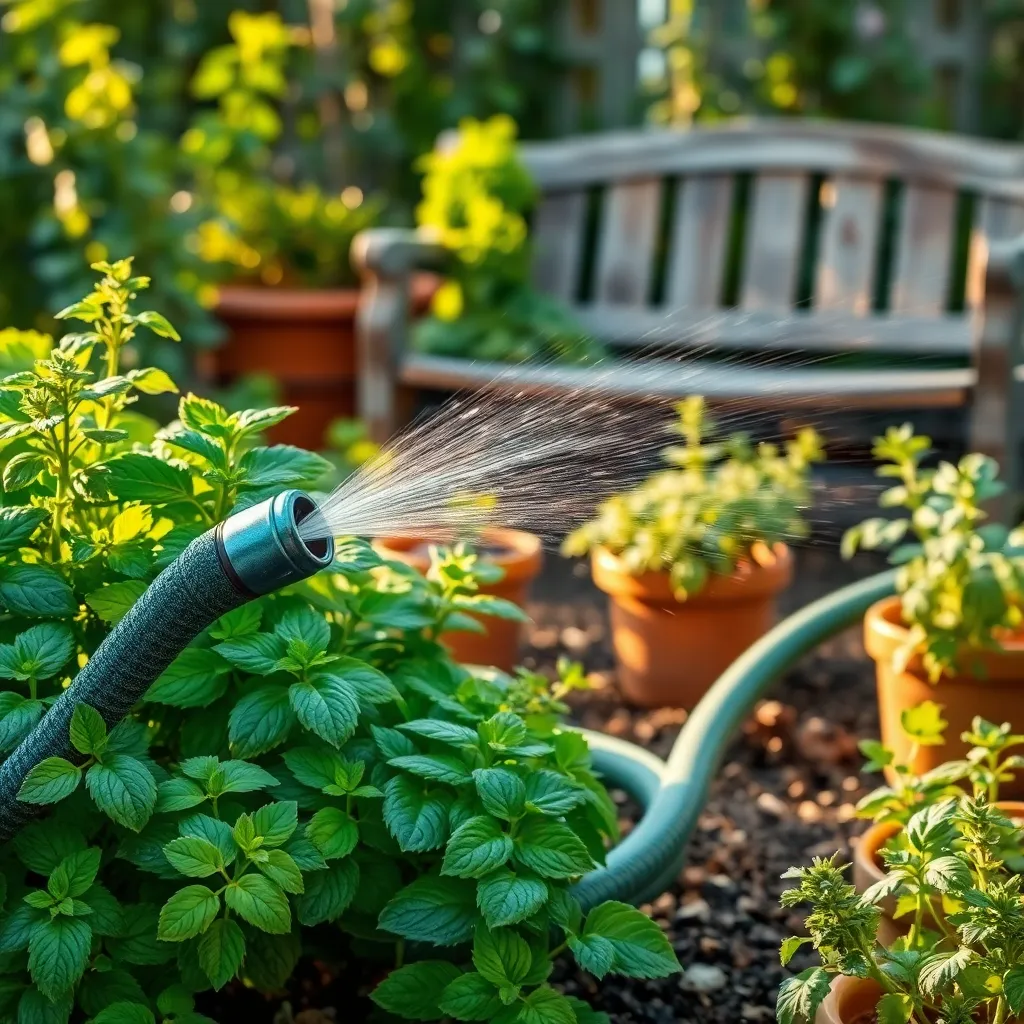
Watering herbs efficiently with a hose can significantly enhance plant growth and conserve water. Always water early in the morning to reduce evaporation and ensure your herbs have enough moisture throughout the day.
For optimal results, use a hose with an adjustable nozzle to control the water pressure. Gentle sprays mimic natural rainfall and help prevent soil erosion around delicate herb roots.
It’s essential to water the base of the plants directly, avoiding the foliage to prevent fungal diseases. A soaker hose can be a valuable investment for large herb gardens, as it provides consistent moisture directly to the soil.
Consider the soil type when determining watering frequency; sandy soils may require more frequent watering than clay soils. Mulching around herbs can help retain soil moisture and reduce the amount of watering needed.
Importance of a Soil pH Tester
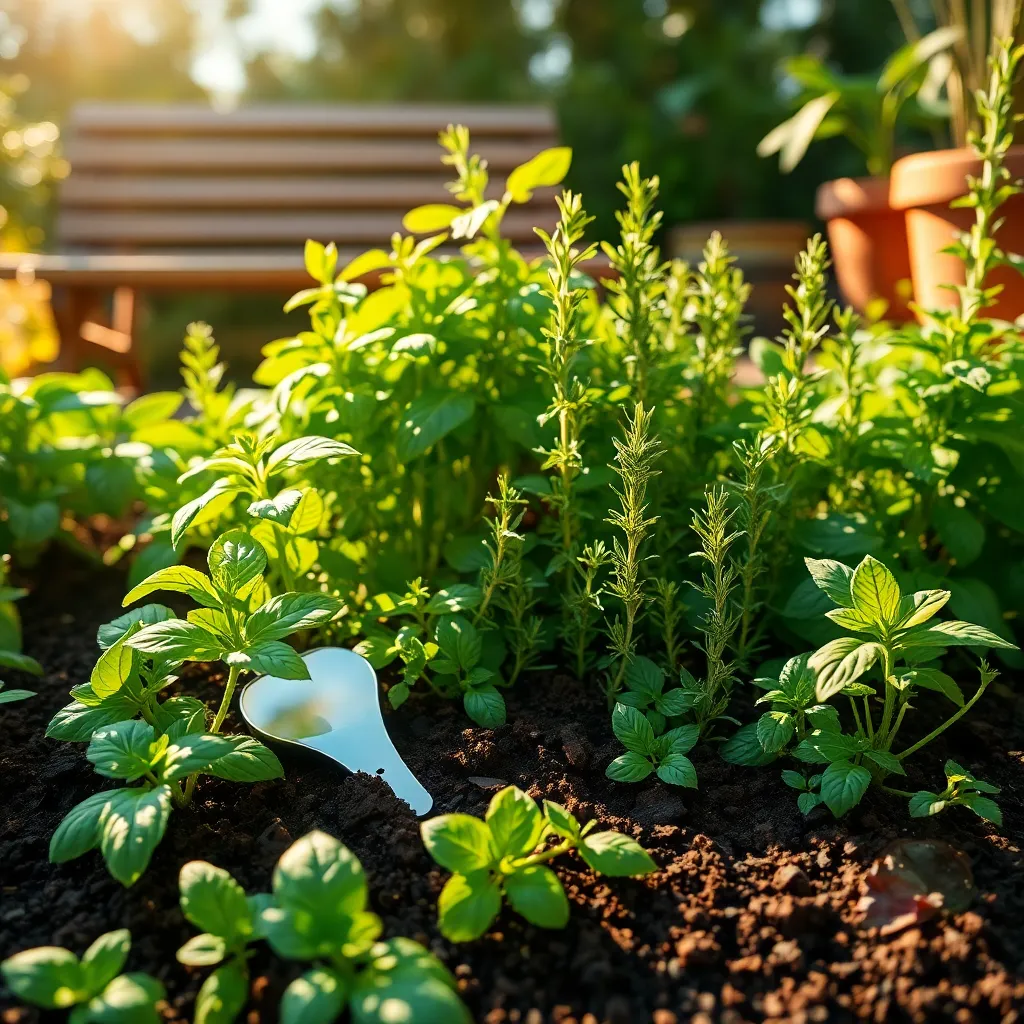
When cultivating herbs, understanding soil pH is crucial for plant health and productivity. A soil pH tester helps you determine the acidity or alkalinity of your soil, which can greatly affect nutrient availability for your herbs.
Most herbs thrive in slightly acidic to neutral soils, with a pH range of 6.0 to 7.5. Testing your soil’s pH allows you to make necessary amendments, such as adding lime to raise pH or sulfur to lower it, ensuring your herbs have optimal growing conditions.
For beginners, using a soil pH tester is straightforward and provides immediate, actionable insights. Insert the probe into damp soil and wait for the reading; this simple step can prevent common growing issues like nutrient lockout.
Experienced gardeners can benefit from regular pH monitoring, especially when rotating crops or introducing new herb varieties. Consistently checking soil pH can also help in diagnosing issues with herb growth that might otherwise go unnoticed.
Why You Need a Garden Rake
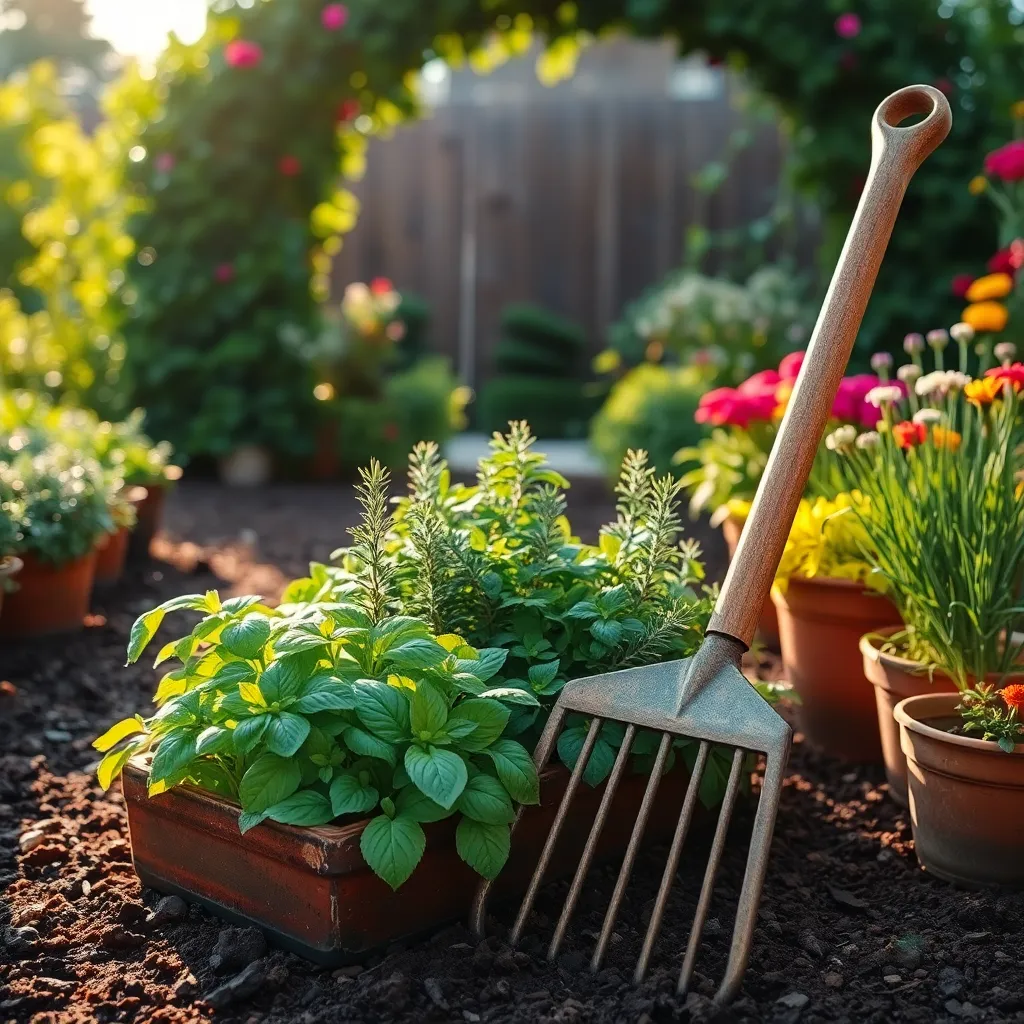
A garden rake is an essential tool for maintaining a healthy herb garden. It helps in removing debris like fallen leaves and dead plant matter, which can harbor pests and diseases.
Using a rake can also help in preparing the soil before planting. By loosening the top layer, it ensures better aeration and drainage, which are critical for the healthy growth of herbs.
For beginners, a lightweight and easy-to-handle rake is recommended, making it easier to maneuver around delicate herbs. More experienced gardeners might prefer a sturdy, adjustable rake, which can handle tougher ground and larger areas.
To keep your garden tidy, rake regularly, especially during fall when leaves accumulate. This not only keeps your garden looking neat but also prevents the soil from becoming compacted, which can impede root growth.
Advanced gardeners might use their rake to incorporate organic matter into the soil, enhancing fertility. This practice ensures that your herbs have the nutrients they need to thrive, leading to a more bountiful harvest.
Comfortable Gardening Gloves
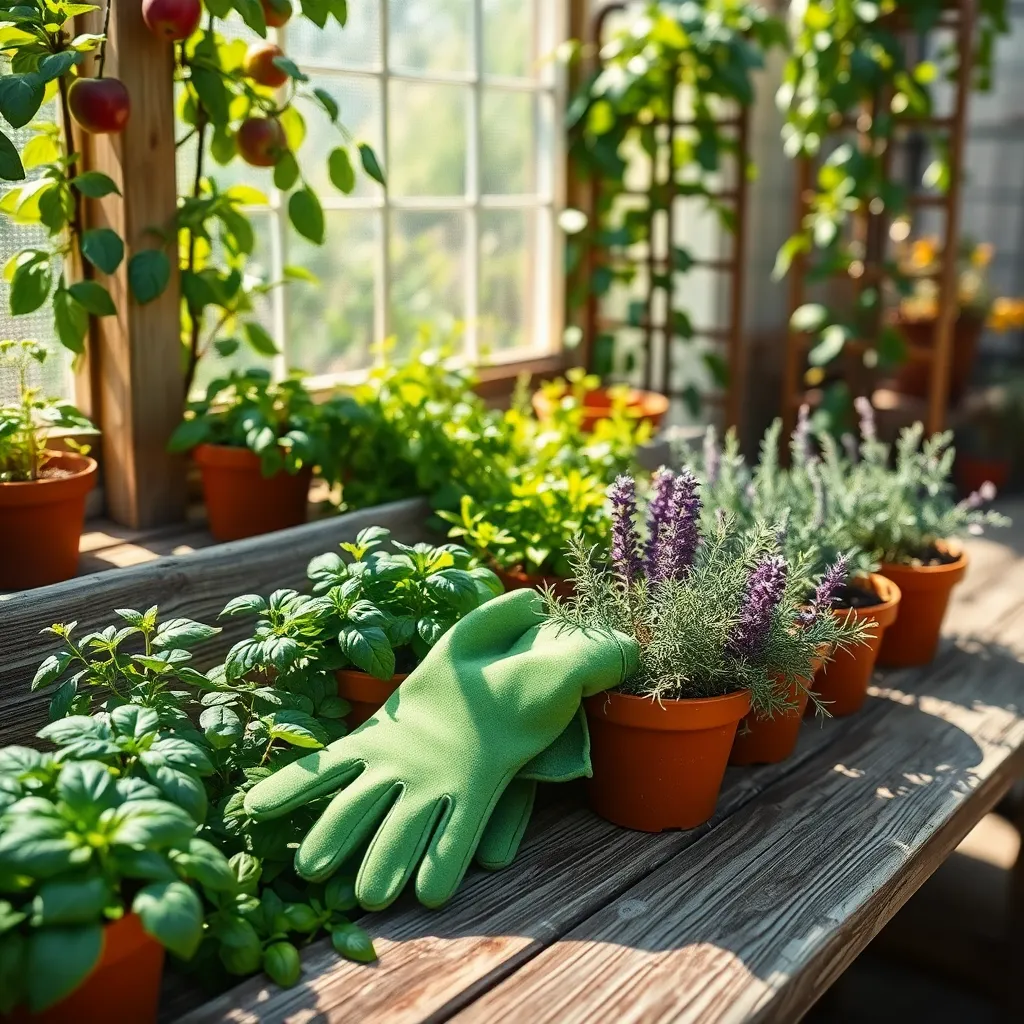
Gardening can be tough on your hands, but wearing comfortable gardening gloves can make a big difference in your experience. Choose gloves that are made from breathable materials such as cotton or bamboo to keep your hands cool and dry while you work.
It’s important to select gloves that fit well to maintain dexterity for tasks like planting and pruning. Look for gloves with reinforced fingertips and palms, as these areas often encounter the most wear and tear when handling tools and plants.
For herb gardening, where you might be dealing with delicate plants, opt for gloves with a snug fit that still allow you to feel what you are doing. Lightweight gloves are often ideal for this purpose, providing protection without sacrificing sensitivity.
Advanced gardeners might appreciate gloves with additional features like adjustable cuffs or touchscreen compatibility, allowing them to use garden apps without removing their gloves. Proper glove maintenance, such as regular cleaning and storage in a dry place, will extend their lifespan and keep them in good condition for seasons to come.
Harnessing the Power of a Hoe
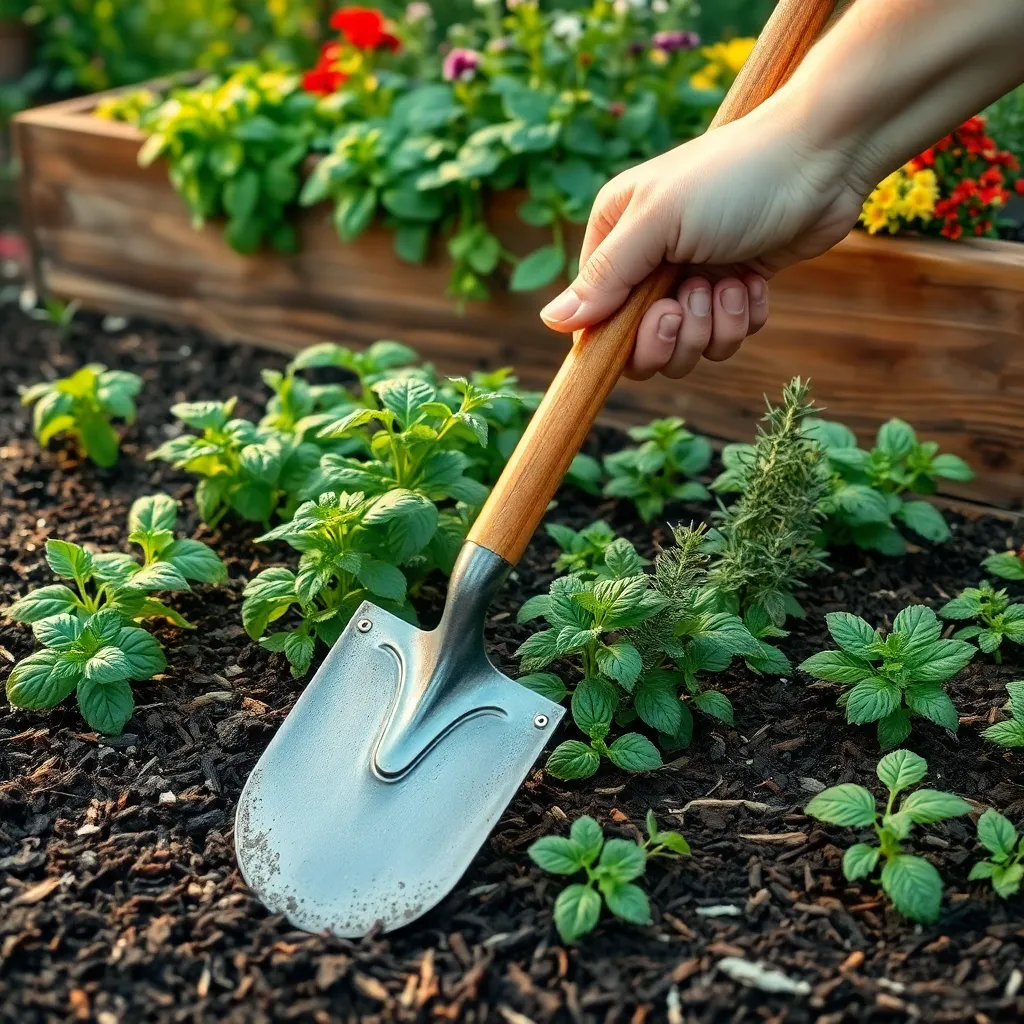
Using a hoe can significantly enhance your herb gardening efforts. This versatile tool is perfect for loosening soil, removing weeds, and creating furrows for planting seeds.
For beginners, choosing a hoe with a comfortable handle is crucial to prevent strain during extended use. Opt for a stainless steel blade, which offers durability and ease of maintenance.
When preparing your soil, a hoe helps in breaking up compacted earth and aerating the area, promoting better root growth for your herbs. Regularly hoeing around your plants can also improve water absorption, reducing the risk of waterlogging.
Advanced gardeners can use hoes to create raised rows or mounds, which can be particularly beneficial for herbs like rosemary and thyme that thrive in well-drained soil. Consider using a draw hoe to shape the soil and improve drainage and airflow around the plant roots.
Proper Herb Planting Pots

Choosing the right pots for your herb garden is essential for healthy growth. Herbs thrive in containers that provide excellent drainage and are appropriately sized for their root systems.
To get started, select pots that are at least 6 to 8 inches deep for most herbs. This depth allows for adequate root development and prevents the plants from becoming root-bound.
It’s important to use a high-quality potting mix rather than garden soil, which can compact and hinder drainage in containers. A mix specifically formulated for container-grown plants will retain moisture while providing the necessary aeration.
For those looking to optimize growth, consider using pots made of materials like terracotta or ceramic, which help regulate soil temperature. These materials can prevent overheating in the summer and provide stability against strong winds.
Additionally, self-watering pots can be a great option for busy gardeners. They help maintain consistent moisture levels, reducing the risk of under or over-watering your herbs.
Finally, remember to position your pots in a location where they can receive at least 6 hours of sunlight daily. Most herbs flourish with ample sun exposure, so placing them on a sunny windowsill or patio is ideal.
Keeping Herbs Healthy with Fertilizer
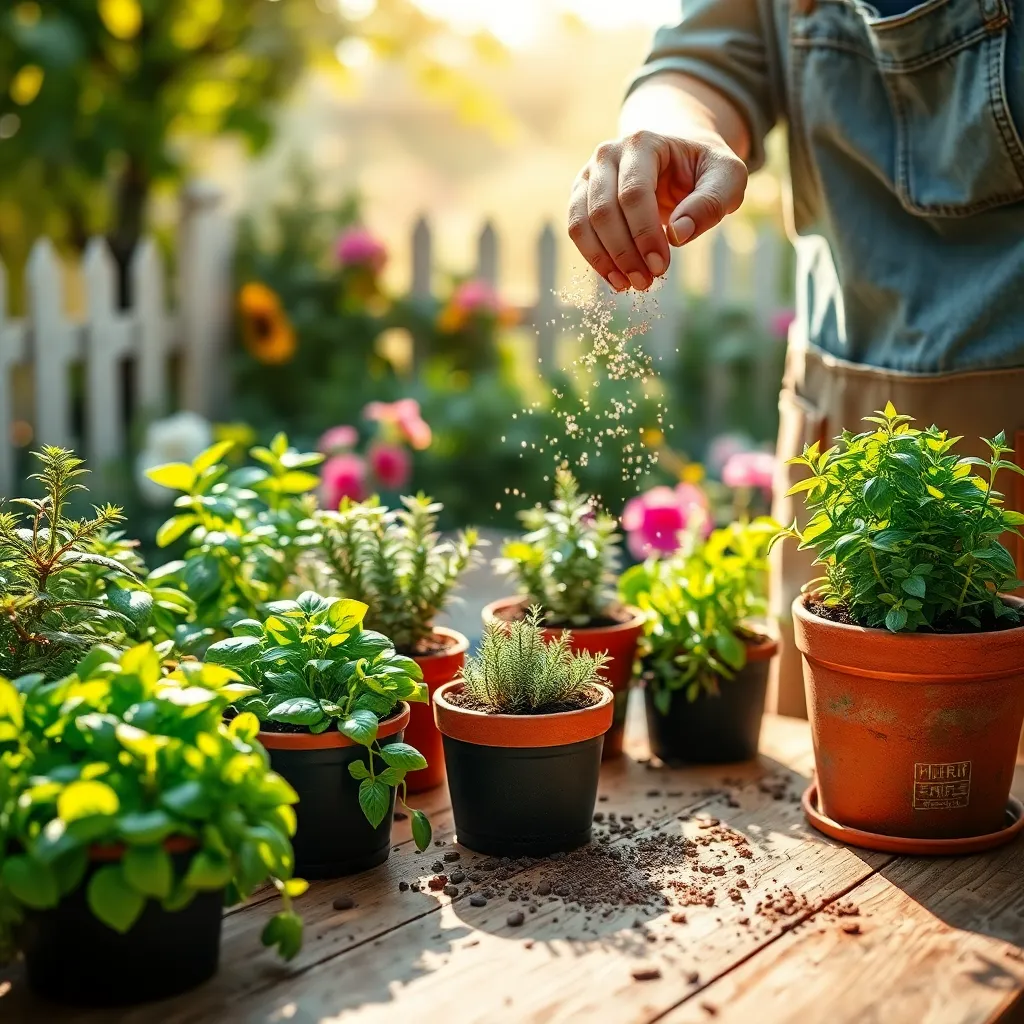
When it comes to keeping herbs healthy, using the right fertilizer at the right time is crucial. Fertilizers provide essential nutrients that ensure vigorous growth and enhance the flavor of your herbs.
For beginners, a balanced, all-purpose fertilizer with an equal ratio of nitrogen, phosphorus, and potassium is a great start. Apply it every four to six weeks during the growing season to maintain optimal nutrient levels.
Experienced gardeners might opt for customizing their fertilization strategy based on specific herb needs. For instance, leafy herbs like basil benefit from higher nitrogen, while flowering herbs such as lavender prefer more phosphorus.
Organic fertilizers are a fantastic option for those looking to maintain a natural garden environment. Options like compost or well-rotted manure can enhance soil structure and slowly release nutrients.
When applying fertilizer, be sure to water the herbs thoroughly afterward to help dissolve and distribute the nutrients evenly. Avoid over-fertilizing as it can lead to lush foliage but poor flavor.
Additionally, it’s beneficial to periodically test your soil to better understand its nutrient profile. This allows you to adjust your fertilization approach, ensuring your herbs receive exactly what they need to thrive.
The Role of Garden Markers

Garden markers are an essential tool for maintaining an organized and efficient herb garden. They help you quickly identify your herbs, especially when they’re seedlings and look similar to one another.
Using garden markers can save you time and prevent mistakes, like accidentally harvesting the wrong herb. Choose durable materials like metal or wood for outdoor markers to withstand weather elements.
Labeling your herbs accurately with the plant’s name and planting date can greatly enhance your gardening success. It’s also beneficial to include specific care instructions, such as recommended watering frequency or sunlight needs, directly on the marker.
For those who love a creative touch, consider making your own garden markers using recycled materials or stones. This not only personalizes your garden but also promotes sustainability, aligning with eco-friendly gardening practices.
Measuring Growth with Rulers
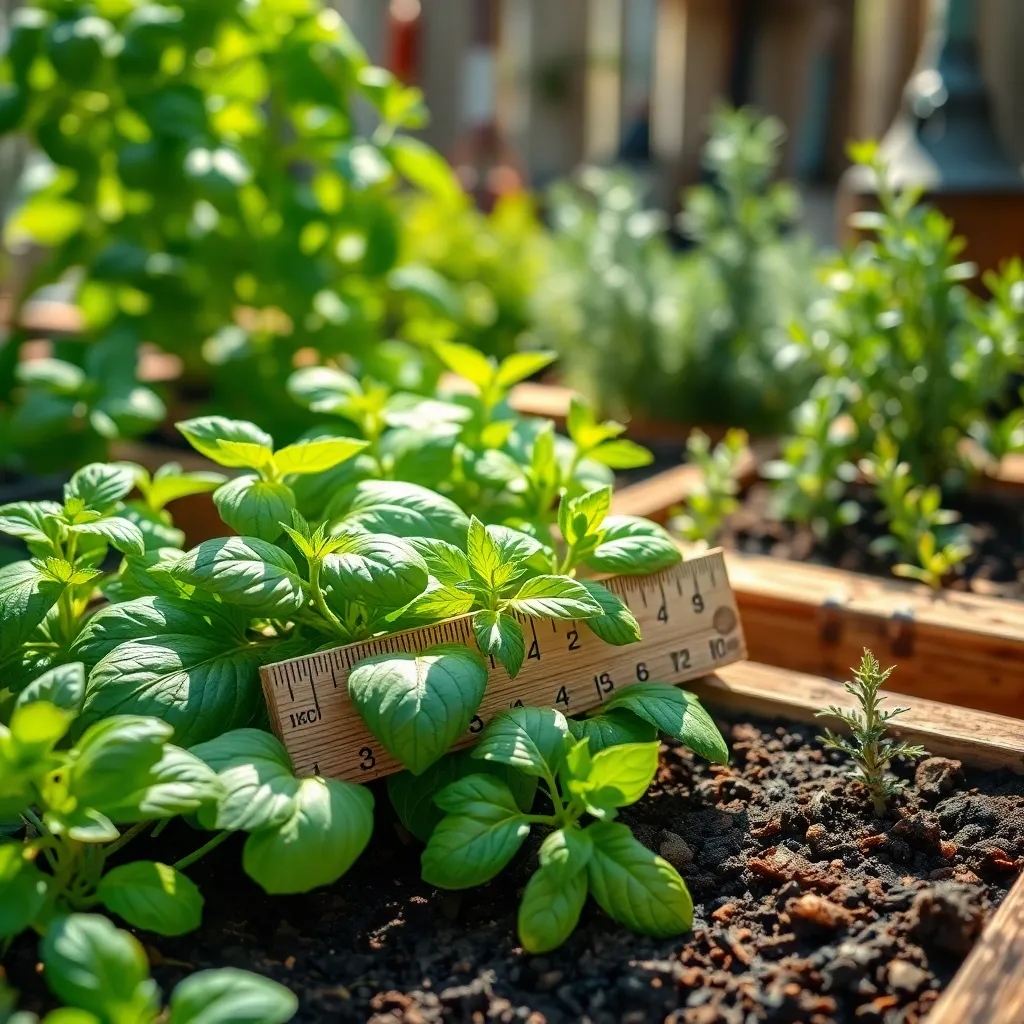
When it comes to tracking the growth of your herbs, a simple ruler can be an invaluable tool. Measuring plant height regularly allows you to monitor progress and make timely interventions if growth is slower than expected.
Regular measurements can help ensure that your herbs are receiving the right amount of light, water, and nutrients. For beginners, establishing a weekly measurement routine can provide insights into how different conditions affect growth.
Using a ruler, measure from the base of the plant to the tip of the tallest leaf or stem. Record these measurements in a garden journal to track patterns over time, which can help you identify the best growing practices for each herb.
Advanced gardeners might use these measurements to fine-tune their care routines, adjusting factors like soil composition or watering frequency. For example, if basil isn’t growing as expected, consider testing soil pH or increasing sunlight exposure.
Organizing Tools with a Handy Caddy
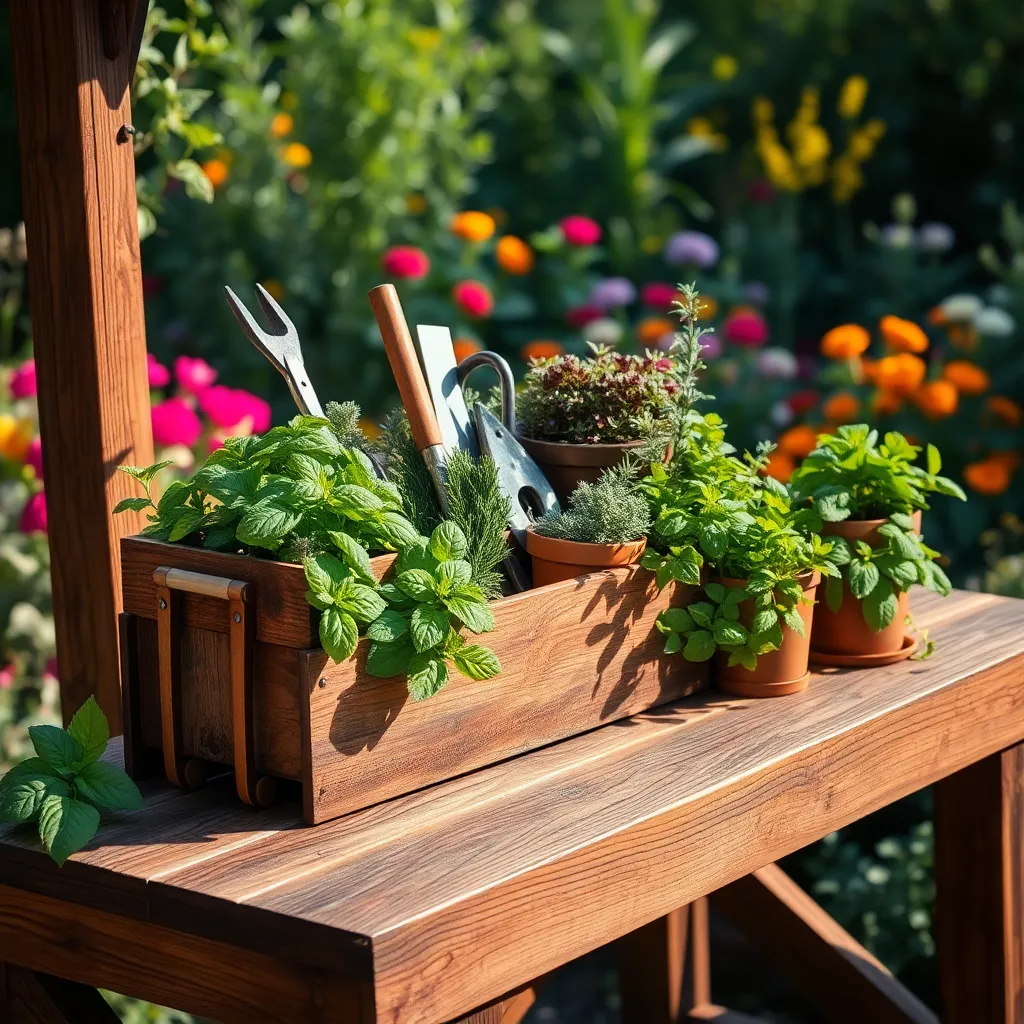
Having a handy caddy to organize your gardening tools can make your herb gardening experience more efficient and enjoyable. Choose a caddy with multiple compartments to keep your tools like trowels, pruning shears, and gloves neatly arranged and easily accessible.
Investing in a durable, weather-resistant caddy is a smart choice, especially if you garden outdoors. Look for materials like heavy-duty plastic or metal that can withstand exposure to the elements without degrading.
Beginner gardeners will find that keeping their tools organized reduces the time spent searching for the right implement when tending to their herbs. For those with more experience, a well-organized caddy allows for quick tool changes, which is invaluable when managing multiple plant varieties.
Advanced gardeners might consider a caddy with a dedicated section for small plant care essentials such as plant markers, a small notebook for growth observations, or even a spray bottle for watering delicate seedlings. This ensures everything you need is in one place, allowing you to focus on the care of your basil, mint, or rosemary without interruption.
Conclusion: Growing Success with These Plants
As we wrap up our exploration of the ’15 Must-Have Tools for Herb Gardening,’ let’s draw parallels to nurturing successful relationships. Just like a well-tended garden, thriving relationships require attention and the right tools. We’ve covered essential concepts such as communication, trust, empathy, and the importance of quality time, alongside conflict resolution, patience, and mutual respect. These are the foundational tools that cultivate a flourishing partnership.
Now, take immediate action by choosing one concept to focus on today. Perhaps it’s actively listening to your partner or expressing gratitude for their presence in your life. Small, consistent efforts can make a significant impact over time.
Remember to save or bookmark this article so you can revisit these indispensable tools whenever you need a gentle reminder. Building and maintaining a strong relationship is an ongoing process, just like tending to a garden. By investing time and care, you will witness the growth of a deeper, more meaningful connection.
Looking ahead, embrace the journey of relationship success with confidence and enthusiasm. With the right tools and a commitment to nurturing your bond, the future holds endless possibilities for love and happiness.
